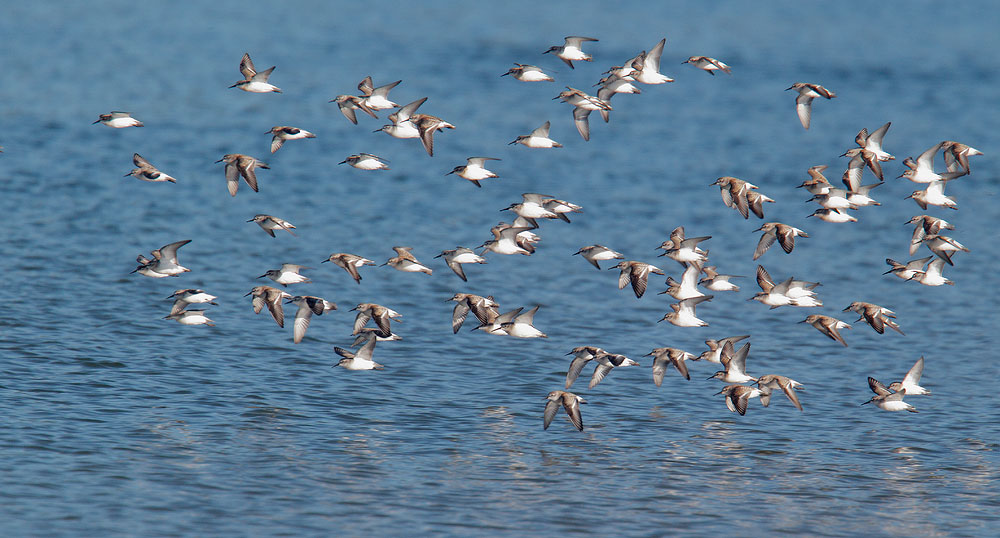Western
Sandpiper, Calidris
mauri
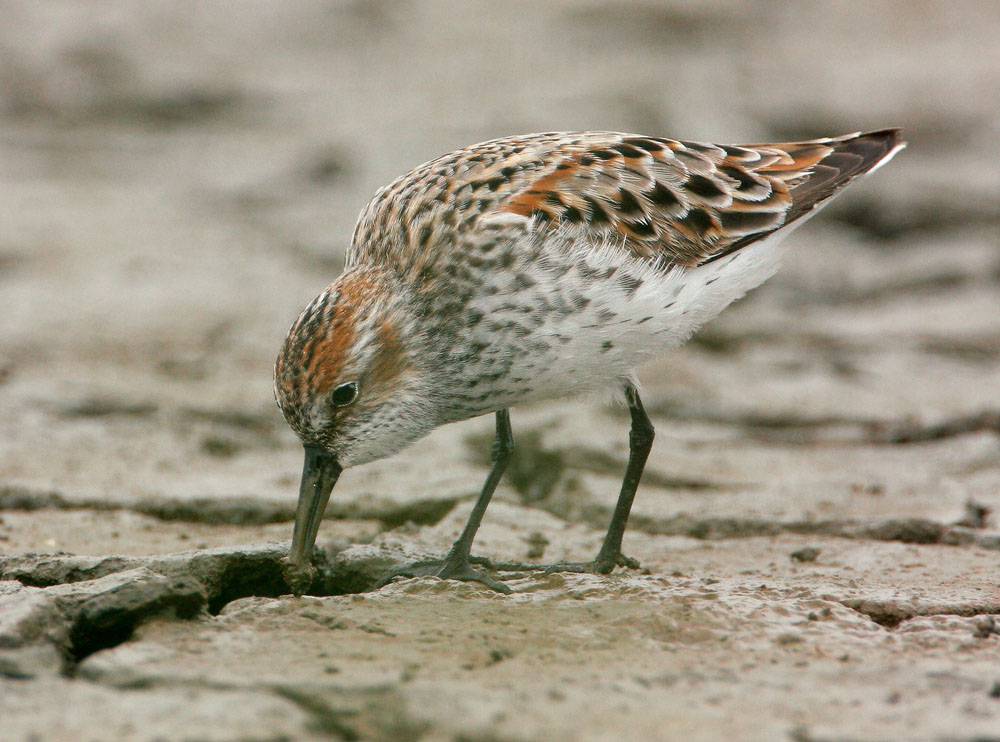
Western Sandpipers have black legs, a relatively long, pointed, and slightly drooping bill, and in breeding plumage (above and the next three down) a spotted breast often with distinctive chevrons, and rufous in the crown, auriculars (cheek patch), scapulars (shoulder feathers), and tertials (longer feathers toward the tail).
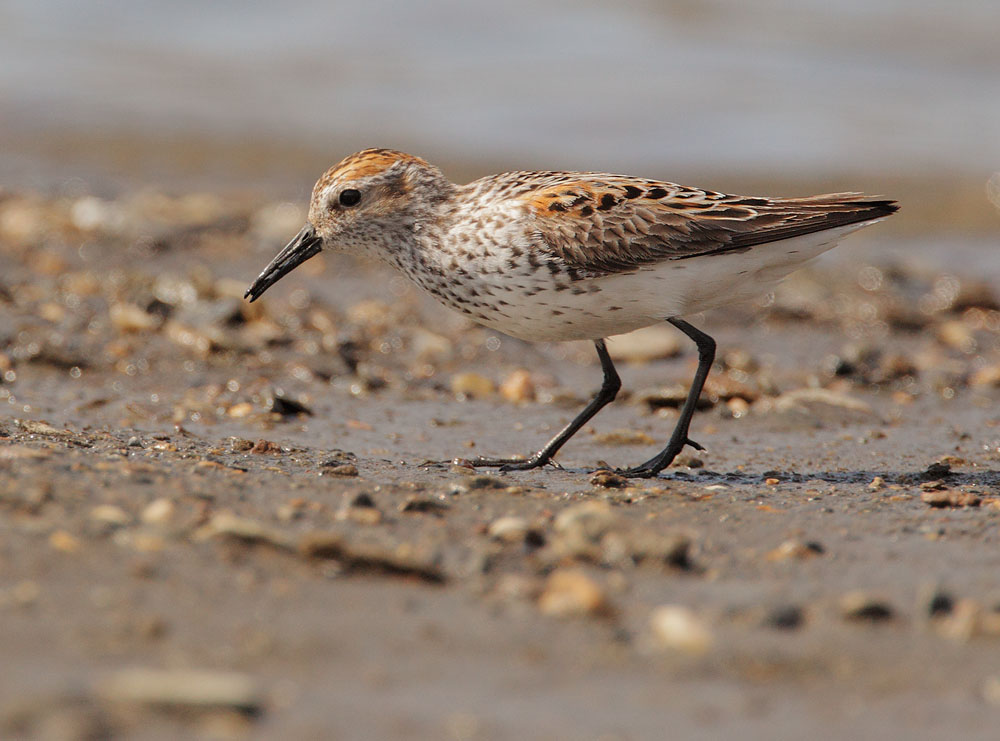
Above, a Western Sandpiper on its breeding ground in Nome, Alaska, showing the longish drooping bill and black legs, and all the features of the breeding plumage: distinct chevrons on the breast, and rufous in the head and upperparts.
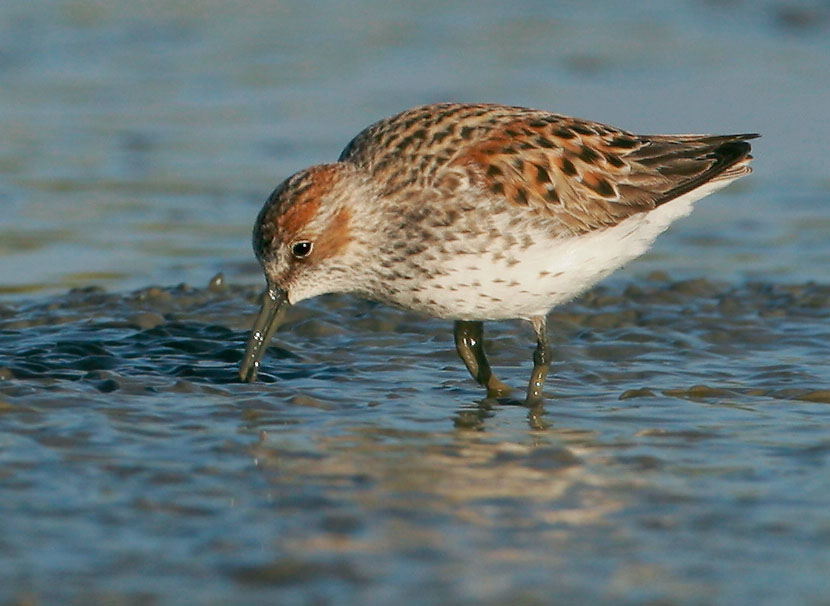
The relatively shorter bill of the breeding-plumage Western Sandpiper above identifies it as probably a male; below,
with a longer bill, probably a female, returning on fall migration in July.
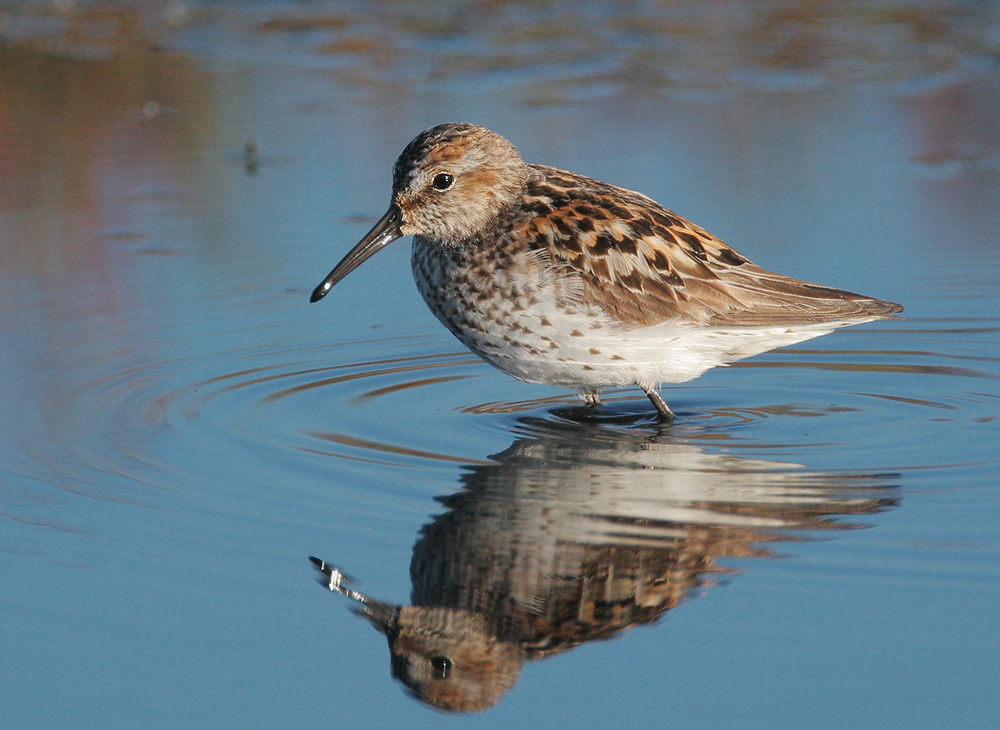
The bird above, in July, shows worn feathers, but not nearly as ratty as the one below, an early migrant photographed on June 18.
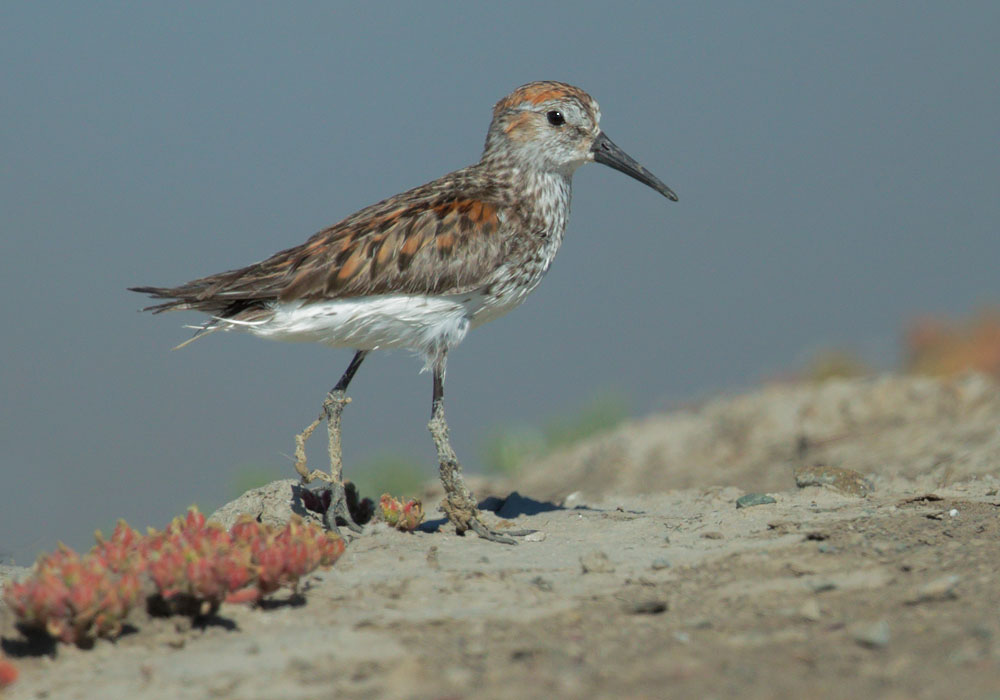
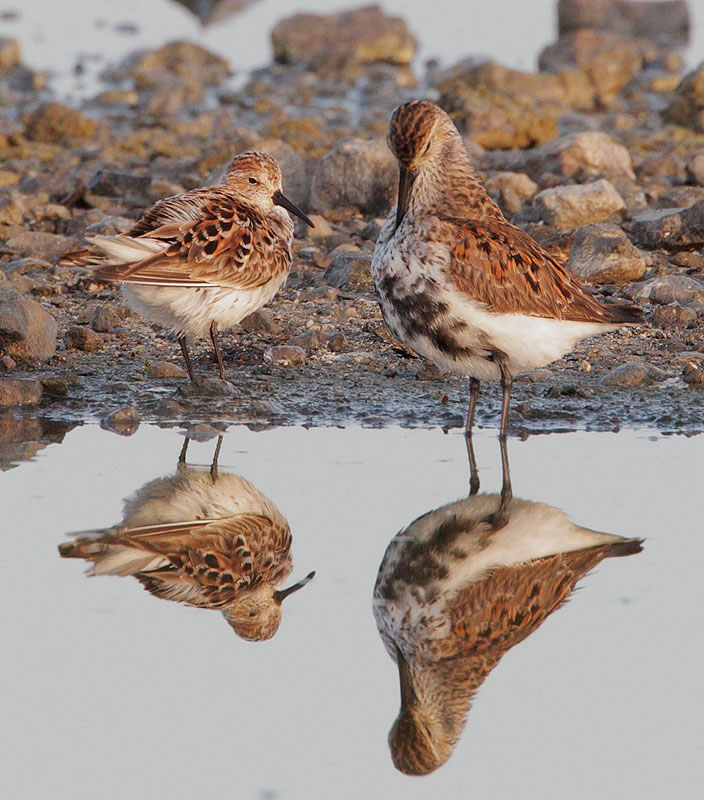
A Western Sandpiper, left, with a Dunlin, right, both in fresh breeding plumage.
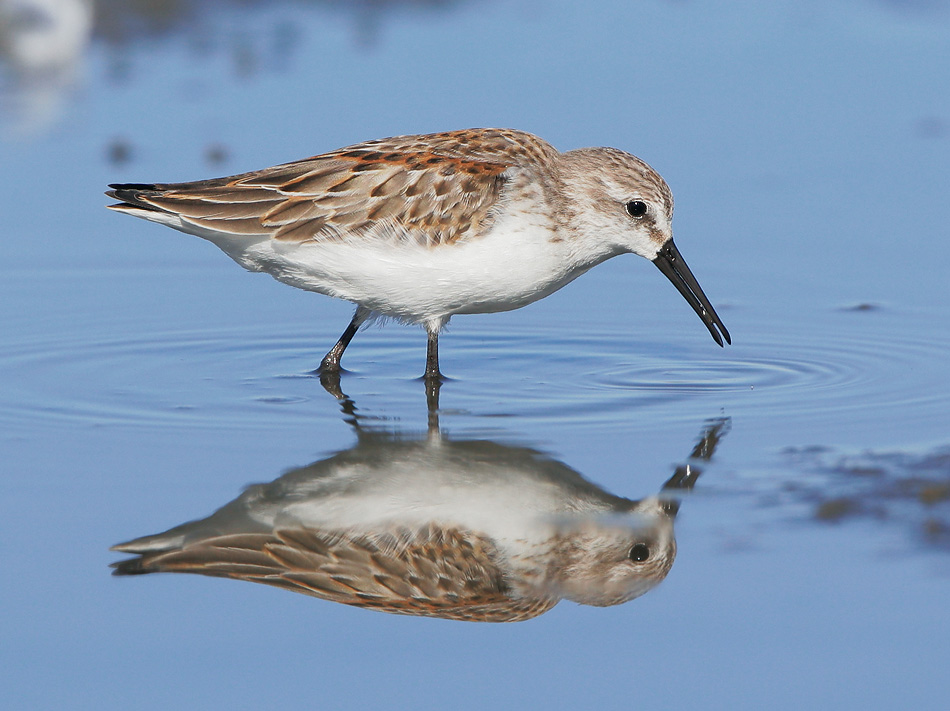
Juvenile Westerns (above and below) have a mostly clear breast, no color in the head, and rufous upper scapulars, making a distinctive shoulder stripe more evident in the bird above.
.
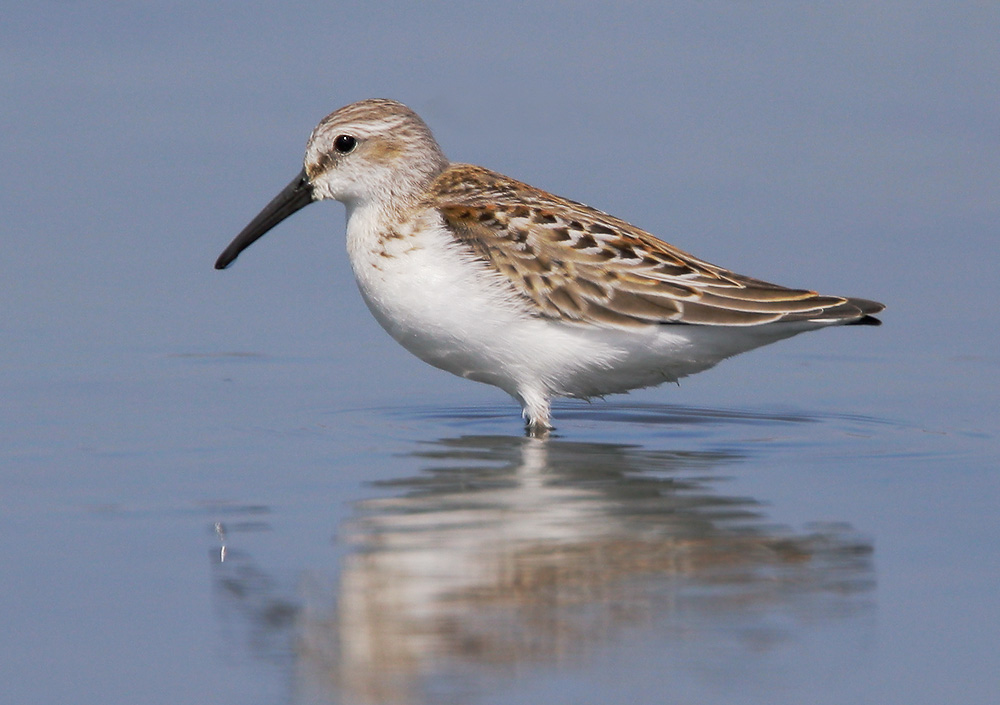

This first-cycle bird has molted on the head and back to the plain gray non-breeding plumage, similar to adults, but retaining juvenal flight feathers.
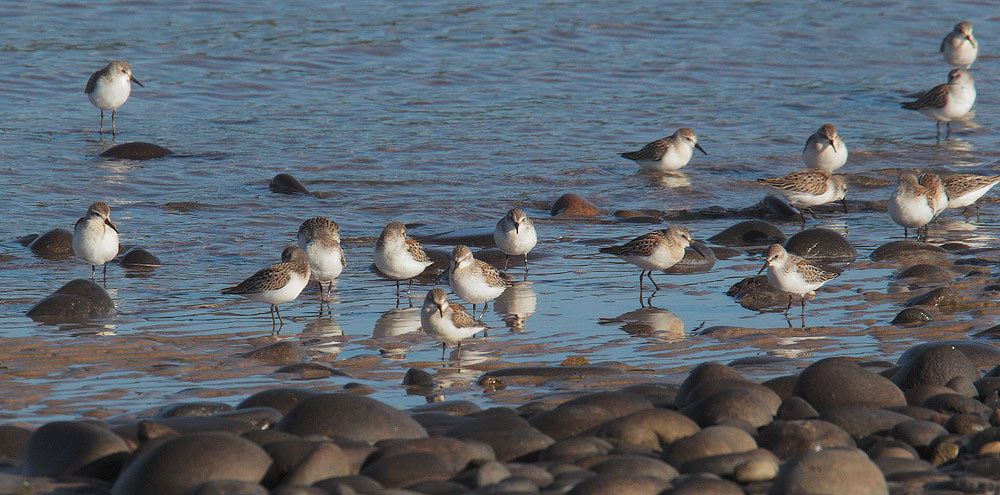
The flock of migrating Western Sandpipers shown standing, above, and flying, below, can be identified as juveniles by the combination of rufous in the upperparts and a clear white breast.
